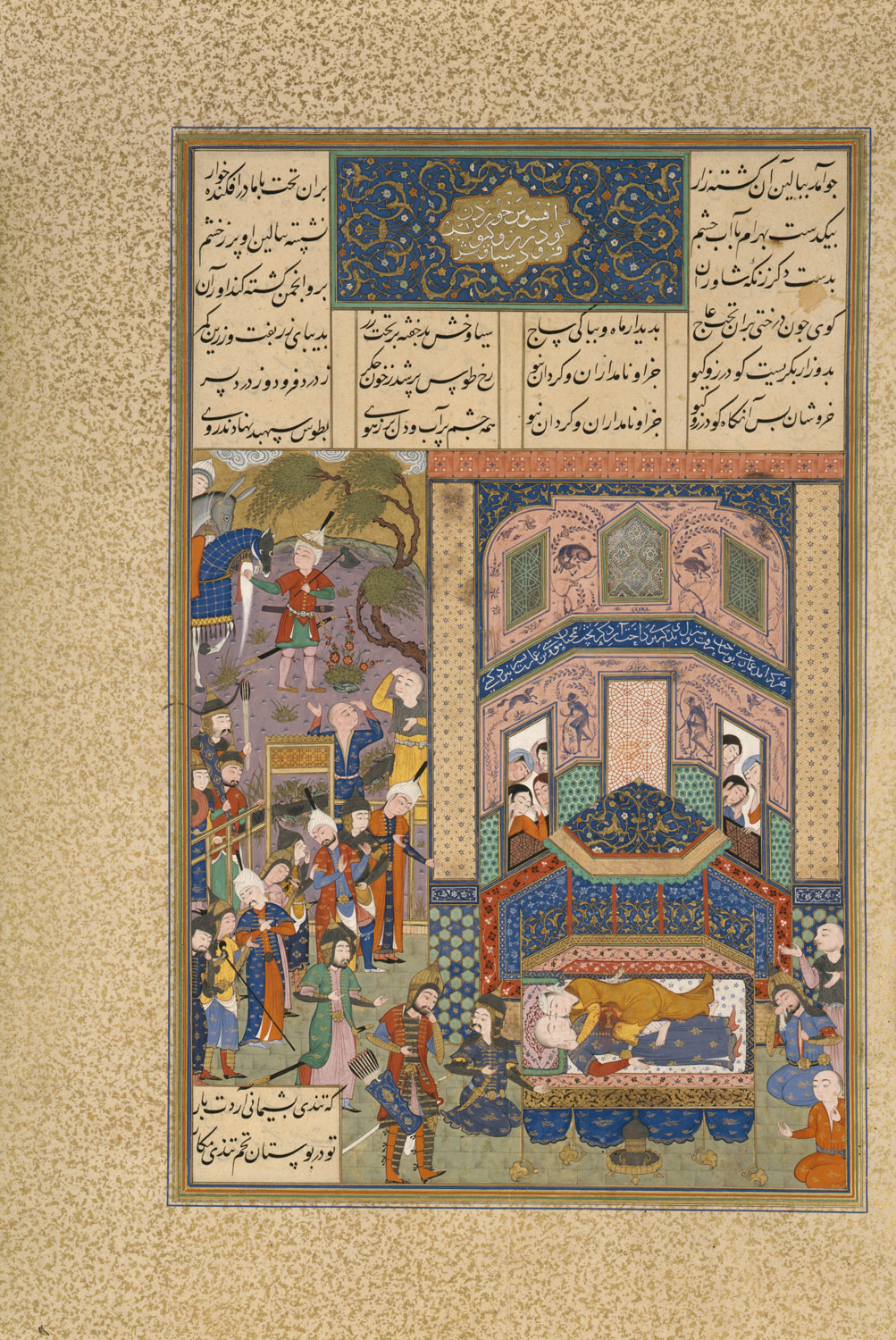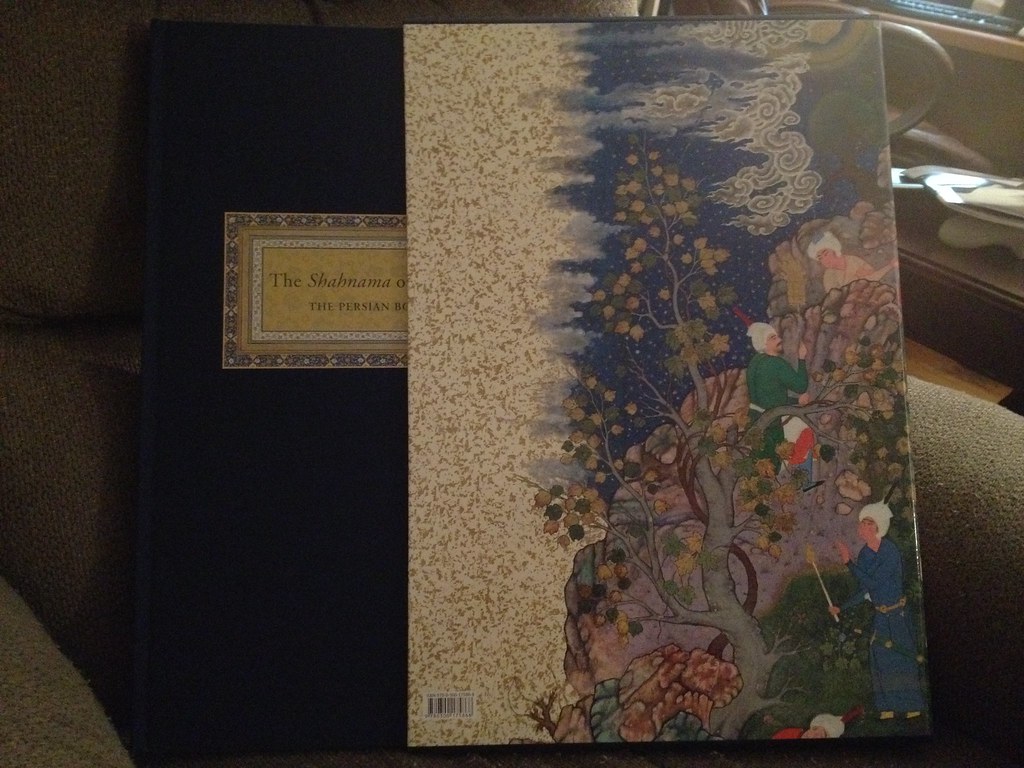March 7, 2012
I <3 the Shahnameh

In his 2003 A Splendor of Letters: The Permanence of Books in an Impermanent World, Nicholas Basbanes tells the memorable and, speaking as a bibliophile, devastating story of the Houghton Shahnameh.
The story goes like this: Arthur A. Houghton Jr., a 20th-century American book collector, has among his insanely valuable books a manuscript which has been described as the most spectacular example of Islamic art, if not of manuscript art, ever produced: The Shahnameh of Shah Tahmasp. This copy of the Shahnameh (a 50,000 line poem first put to paper in 1010 by the Persian poet Ferdowsi) managed to survive intact from its creation in the early 16th century until the 1970s, when it ran afoul of Houghton.
Houghton acquired the manuscript from Baron Edmond de Rothschild in 1959 and almost immediately put it on deposit at Harvard University with “the understanding that an elegant facsimile would be published by the university’s academic press.” (Basbanes 2003) Then, for whatever reason, he abruptly withdrew it from Harvard in 1972 and donated 78 of the most valued pages to the Metropolitan Museum of Art. Yes, he cut out seventy-eight pages and gave them away.
There’s some speculation that Houghton intended to eventually donate the rest of the manuscript to the Metropolitan Museum, but that didn’t happen either. Instead, between 1972 and 1996 the remaining 180 pages of the manuscript were sold off or traded, in batches both by Houghton and later his estate, to a variety of private and public collections. Souren Melikian wrote in his 1996 report on the final Sotheby’s sale “It was a great day for commerce but hardly for the preservation of cultural treasures.”
Long story short, a priceless treasure of book art was destroyed by a single owner. But all was not entirely lost: in 1981 Harvard University Press did manage to produce a facsimile in two volumes, 600 copies of which were actually sold to the public. Nowadays you can get a copy of this facsimile for the comparatively low price of $3500-$4500.
Ever since reading Basbanes’ tale in 2003 I have been mad to own a copy of this facsimile. It was absolutely in my top-5 list of books I’d buy if I, you know, had the resources to spend on collecting that I wish I did (along with Frank Wild Reed’s Bibliography of Alexandre Dumas and the 1893 deluxe edition of the Beardsley-illustrated Morte D’Arthur, in case anyone wants to get me an especially lovely birthday present). And so I nearly had an aneurysm when I saw the solicitation from Yale University Press for a new facsimile: The Shahnama of Shah Tahmasp.
Now, I couldn’t buy the deluxe edition. But I’ll be damned if I’d let a book I’d been fantasizing about for the last decade go totally un-bought. I picked it up yesterday from the Bob Miller Book Room.

My new baby!
But here’s the best bit:
Being, as I was, at headed for the Bob Miller Book Room, I thought I’d take the family to the Royal Ontario Museum for Maggie’s Daily Dose of Dinosaur and, lo and behold! They are currently showing a special exhibit on the Shahnameh! Among the ROM’s holdings are pages from another great Shahnama manuscript also broken up during the 20th century, the Great Mongol Shahnama. These and other pages on display from McGill University and other sources represent a rather depressing history of decontextualizing Islamic art, but that’s a post for another day. As an introduction to the stories and cultural value of the Shahnameh, the exhibition is absolutely worth seeing. They even have a copy of the 1981 Houghton Shahnameh from Harvard on display – “The most luxurious and lavishly illustrated royal manuscript” preserved to “document and contextualize…” the illustrations.
A context we only get now in facsimile, thanks Houghton.
The ROM’s Shahnama – The Persian “Book of Kings” exhibit runs until September 3, 2012 in the Wirth Gallery of the Middle East, Level 3.
I have a facsimile (1970-or-80-something?) of the 1893 deluxe edition of the Beardsley-illustrated Morte D’Arthur that I’ve been thinking of selling, if you’re interested.